Bagh-e Eram, located in Shiraz, the capital of Fars province in southern Iran, is a historical Islamic garden considered one of examples of Iranian garden art and Qajar-era aesthetics. In Persian, "Eram" (from the Arabic word "Irem") refers to the descriptions of paradise in the Quran. Therefore, "Eram Garden" means "Paradise Garden." This garden, listed on the UNESCO World Heritage List, holds a prominent position among Islamic gardens in terms of its relationship with nature and visual narrative power.
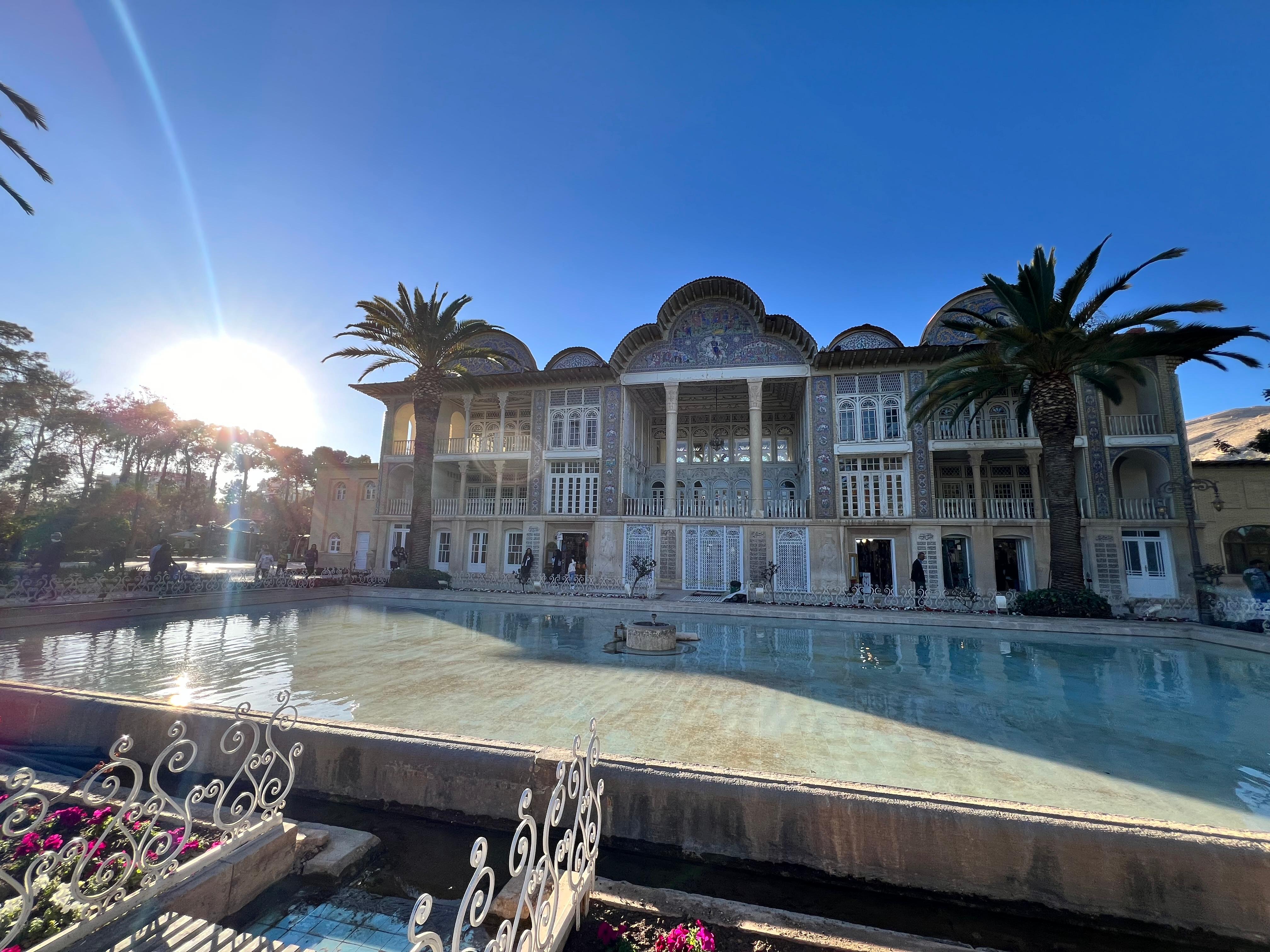
(Photograph: Duygu Şahinler)
Historical Background and Construction
While the initial foundations of Bagh-e Eram date back to the Safavid period, it acquired its current form during the 19th century under the Qajar dynasty. The garden's present state is largely shaped by the grand pavilion and decorations built with the support of Muhammad Kuli Khan Kashkay, an important member of Shiraz's ruling family. During this period, governors appointed to the Fars region, particularly with the direct or indirect support of Nasreddin Shah, commissioned various palaces and gardens.

(Photograph: Duygu Şahinler)
The Qajar Dynasty and Turkish Identity
The Qajars, the dynasty that built Bagh-e Eram, are of great significance to the Turkic world. Historically, they were a Turkmen tribe affiliated with the Kayı clan of the Oghuz Turks. Founded by Agha Muhammad Khan in the late 18th century, this dynasty ruled Iran from 1796 to 1925.
The Qajar dynasty left a significant mark on the Turkish language and culture. Although the official language was Persian, the Qajar court contained poems and documents written in Turkish (particularly in Chagatai and Azerbaijani Turkish dialects). One Qajar ruler possessed a Turkish divan. Nasreddin Shah also showed interest in Turkish, alongside Persian. During his reign, Turkish was commonly used, especially within the army and court.
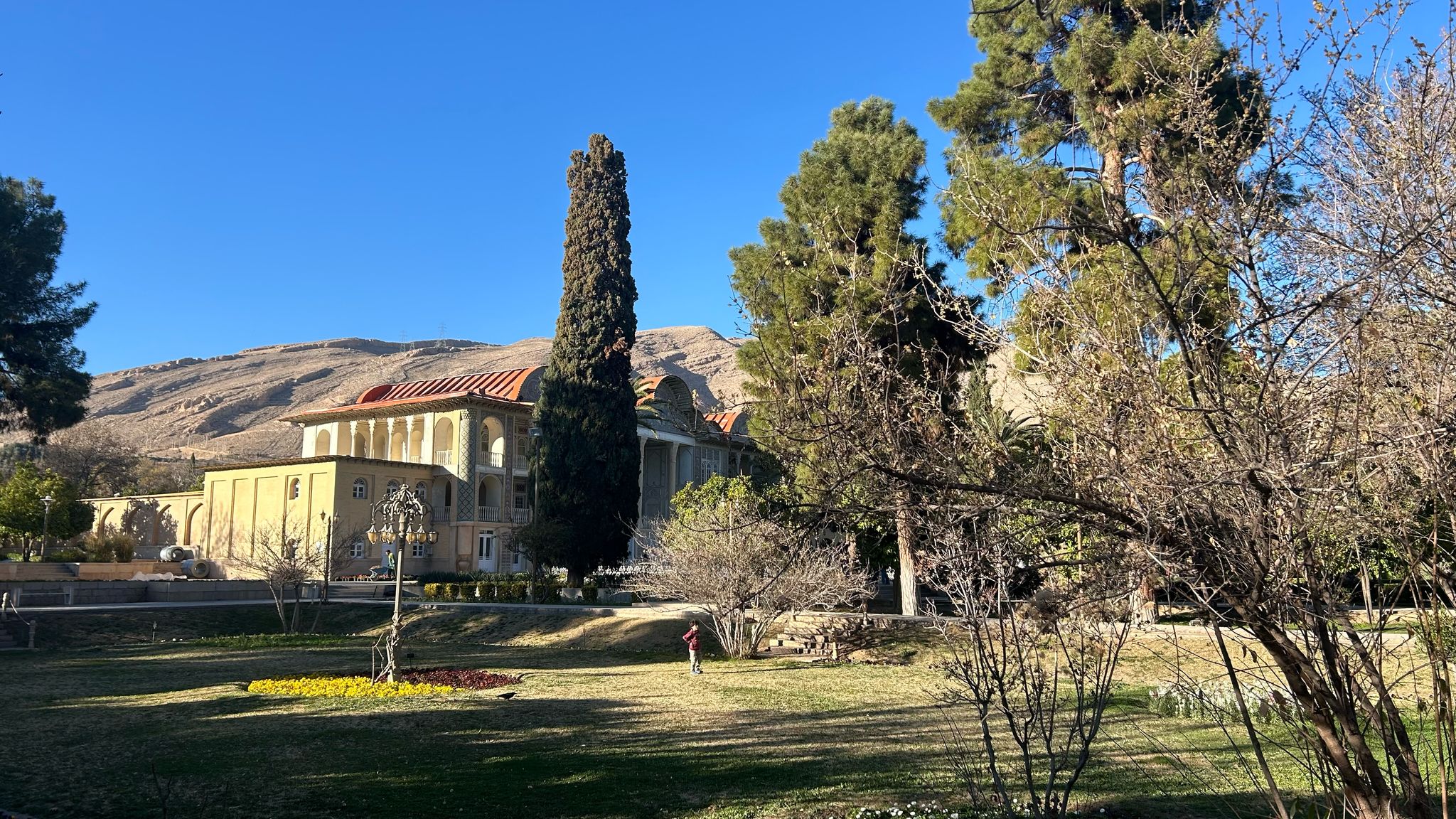
(Photograph: Duygu Şahinler)
III. Nasreddin Shah and Bagh-e Eram
Nasreddin Shah Qajar (r. 1848–1896) was the longest-reigning monarch of the Qajar dynasty and a key figure in initiating the modernization process in Iran. His reign witnessed a significant transformation in the visual arts, particularly in architecture, tile work, and portraiture.
Nasreddin Shah's connection to Bagh-e Eram is evident in the main pavilion's facade tiles. Panels depict Nasreddin Shah on horseback, Solomon's court, women swooning at the beauty of Joseph, and scenes of Khosrow watching Shirin, all rendered in a figurative style.
This tile program aimed to identify the ruler with divine justice and elevate the Qajar identity among the people. Qajar iconography frequently featured symbols of Turco-Islamic imperial ideology (e.g., throne, crown, depictions on horseback, scenes of justice).
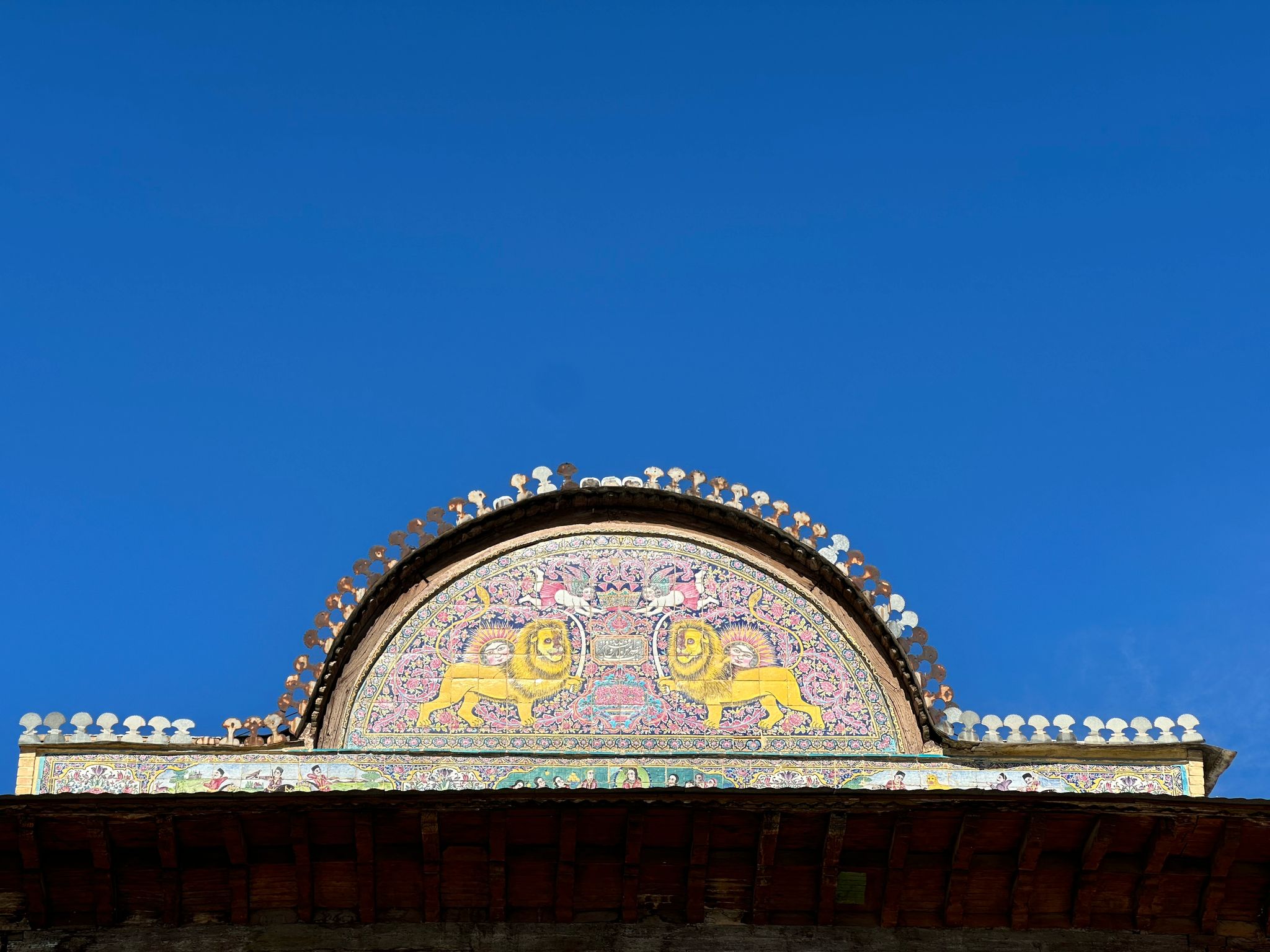
Bagh-e Eram Decorations (Duygu Şahinler)
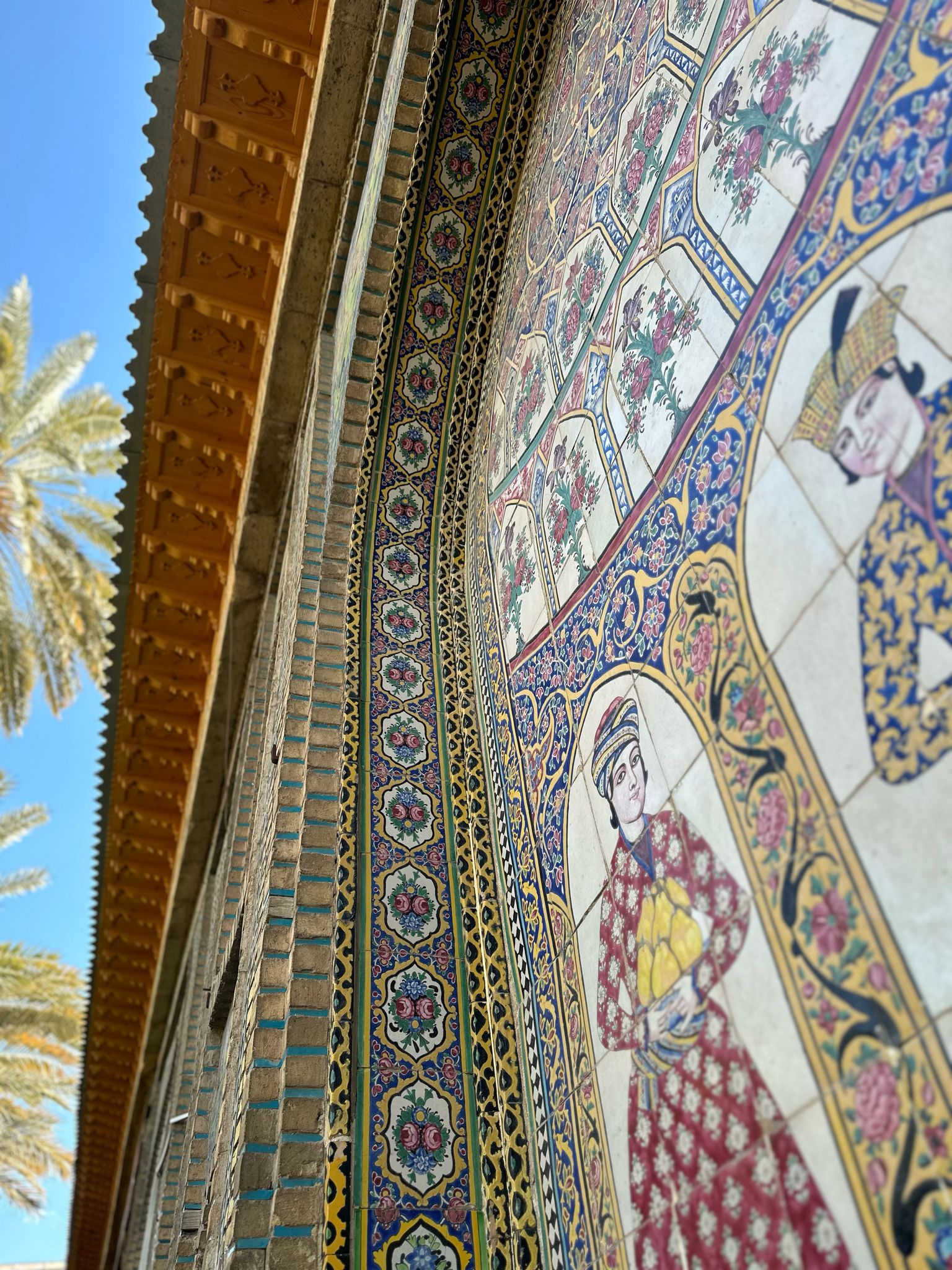
Bagh-e Eram Decorations (Duygu Şahinler)
Architectural and Aesthetic Features
Bagh-e Eram is designed according to the classical Iranian chahar bagh (four-garden) system. This system divides the garden into four equal parts, with a central pool or fountain. This plan is inspired by Quranic descriptions of paradise and emphasizes the element of water. Fountains, symmetrical paths, and citrus trees are harmoniously integrated.
The three-story pavilion at the garden's center displays typical features of Qajar-era palace architecture: large pediments, colorful tile panels, high arched arcades, and mirrored ceilings. The decorations employ the Qajar-era seven-color tile technique (haft rang). The vibrancy of colors and the figurative richness of the scenes result from a combination of traditional Iranian miniature painting and Western perspective techniques.
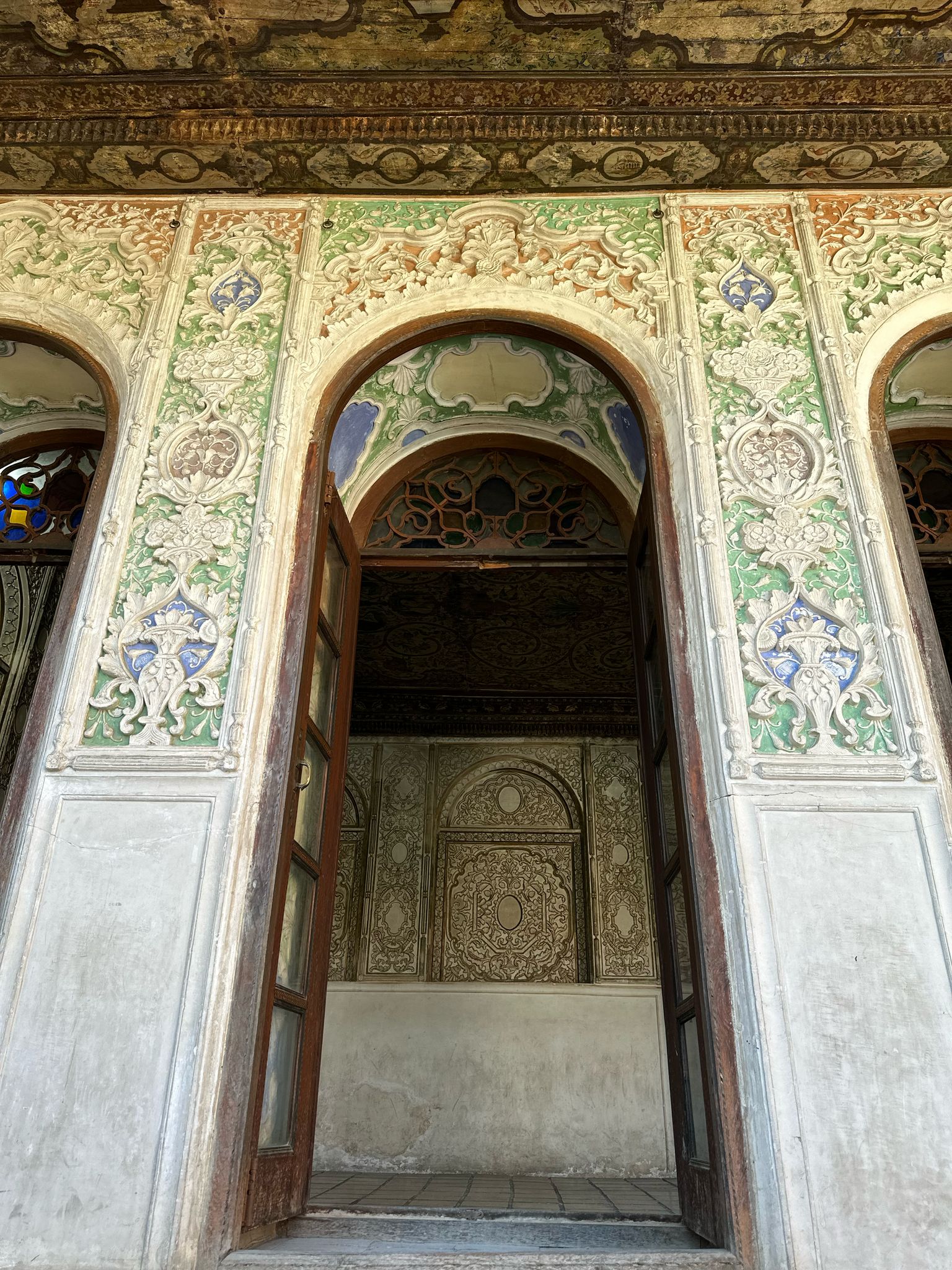
Bagh-e Eram Decorations (Duygu Şahinler)
Narratives and Iconography in the Tile Panels
Four distinct tile scenes reflect the literary and religious narratives of the period:
- Solomon and Rostam: Symbolizing the union of power and justice.
- Women swooning at the beauty of Joseph: Interpreted as the earthly reflection of divine beauty.
- Khosrow watching Shirin bathe: Exploring themes of love, desire, and fate.
- Equestrian portrait of Nasreddin Shah: Representing the glorification of the ruler.
These iconographic choices are based on the depiction of the ideal ruler in Turco-Islamic culture. They also showcase the aesthetic and technical advancements of the era.
Bagh-e Eram and Traces of Turkish Culture
The construction and decoration of Bagh-e Eram by the Qajar dynasty directly makes it a product of the Turkish cultural sphere. In this context:
- The Qajars were a Turkic dynasty, originating from the Oghuz tribes.
- A culture of speaking and writing in Turkish existed within the court and army.
- The iconographic program in Bagh-e Eram directly aligns with Turkish imperial culture.
- The figurative compositions and tile techniques employed are a blend of the Turkish miniature tradition and Western influences.
- Therefore, Bagh-e Eram is not merely an Iranian structure but also a part of Turco-Islamic art history.
Today, located within the grounds of Shiraz University, Bagh-e Eram serves as a botanical garden, tourist attraction, and architectural art piece, fulfilling multiple functions.

